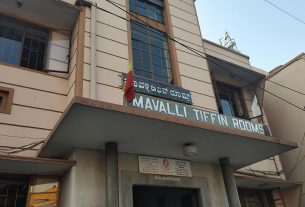Exclusive millet-based restaurants have been gaining ground in the city in the last 2-3 years, pushing further the growth in the production of millets.
By Riya Sharma
Millet-based restaurants have been springing up in Bengaluru in the last two to three years bringing back the long-forgotten food. Millets are now being considered the food of the future or nutri-cereal by scientists.
Reports by the Indian Agricultural Research Institute show that there has been consistent growth in the production of millets during the last few years due to a relatively higher increase in yield in Karnataka. .
“Until now, farmers used to grow millets for their families or just for sale in the local markets, but now with increasing demand and brokers arranging the deals, it is being sold in the cities on a larger scale,” said Krishnappa KG, a farmer in the Hassan region.

At least 85 percent increase in millet acreage over the current levels is expected to be attained by 2050 if policy push and demand creation trend continue, according to the Indian Institute of Millets Research (IIMR).
Abhishek Beeraiah, civil engineer-turned-entrepreneur opened his millet-based restaurant, Millet Mama in Bengaluru’s South End Circle in 2017 as a way of promoting the use of local foods like millet. Millets, he said, “are nutrient-rich grains which can also provide a solution to the problem of water scarcity in the state as they are drought-tolerant crops.”
Prem’s Graama Bhojanam is another exclusively millet-based restaurant that opened in Jayanagar three years ago. Teena Avinash, who co-owns the restaurant with three other friends, said, “There has been a rising demand for non-glutenous products like millet because of its various health benefits. It is effective in reducing blood pressure and helps against heart diseases. It also prevents type 2 diabetes along with other health benefits.”
Farming organizations like Jivabhumi bridge the gap between farmers and restaurateurs and help farmers sell their produce to a variety of customers by giving them a minimum of 60 percent returns on their products directly.
“Our objective is to support the millet farmers by helping them get proper market access, good seeds and introduce them to the traditional ways of growing and processing millets which have been forgotten now,” said Kabbalaiah, a member of Jivabhumi.
Dr. Dayakar Rao B, a senior scientist at the IIMR, threw light on the emergence of lifestyle diseases like diabetes and cardiovascular diseases that are prevalent in rice and wheat-consuming areas. “The micronutrient deficiency has not been catered to by wheat and rice. We have achieved food security in our country but the nutritional security is far from a reality,
“Over time people have forgotten these indigenous grains of the region because of the lack of support from the government, favouring rice and wheat through the Green Revolution and wiping out millets altogether.” he added.
But now, he said, the government has realized that there is no alternative to these nutri-cereals and government has taken steps to include millets in the Public Distribution System (PDS) in many states.
“A committee constituted by the central government for examination of inclusion of millets in the PDS for improving nutritional support has recommended inclusion of millets across the country and the same has been accepted by the central government,” said a notification issued by the Agriculture Ministry, news reports reported in April 2018.
Consistent growth in the production of millets has been observed over the past few years because of the rising urban demand, according to Kabbalaiah.
“The production of millet crops in Tumkur and Kolar regions around Bangalore has specifically increased with the rising demand for millets in the area,” Abhishek added.
The government’s move that came in the backdrop of the need to promote the cultivation and consumption of millets—for the Kharif crops of 2019-20, the Minimum Support Prices (MSP) of Jowar has been hiked by Rs 120 per quintal and of Ragi by Rs 253 per quintal.
The farmers are still not making enough profit on the amount they are producing and the MSP is still very less compared to other commercial crops, according to Krishnappa KG.

Owner of Vaathsalya Millet Cafe, one of the first millet-based restaurants in the city, Jyoti Madinur has been working with millets since the past 17 years and believes that millets are the need of the present and the future and that more support should be offered in the form of public procurement policies to the farmers by the government.
India celebrated 2018 as the National Year of Millets and the Food and Agriculture Organisation (FAO) Council has approved India’s proposal to observe an International Year of Millets in 2023.
“People in Bangalore are not just health conscious but also environmentally conscious. Eating millets is not just a healthy choice but also an environmental-friendly choice by avoiding foods that use a lot of chemicals and erodes soil fertility and uses excess water,” Jyoti said.
Abhishek added that Bengaluru comes under the ‘maidan’ region of the Western Ghats and is a lake dependent land that is not very well irrigated.
“Millet should have been a natural choice of food for Bangaloreans because of this reason and people have begun to understand that now,” he said.





Unique article. Great information.
Now I shall add millets to my diet as well.
Excellent story, Riya. Keep it up.
Thanks Riya for telling about benefits of millet. Your efforts are appreciable.
Very informative and very well written!!
Riya your mind has many topics but this time your topic of grain food is fantastic you have chosen a very good topic. Keep it up
Very Informative article about millet.